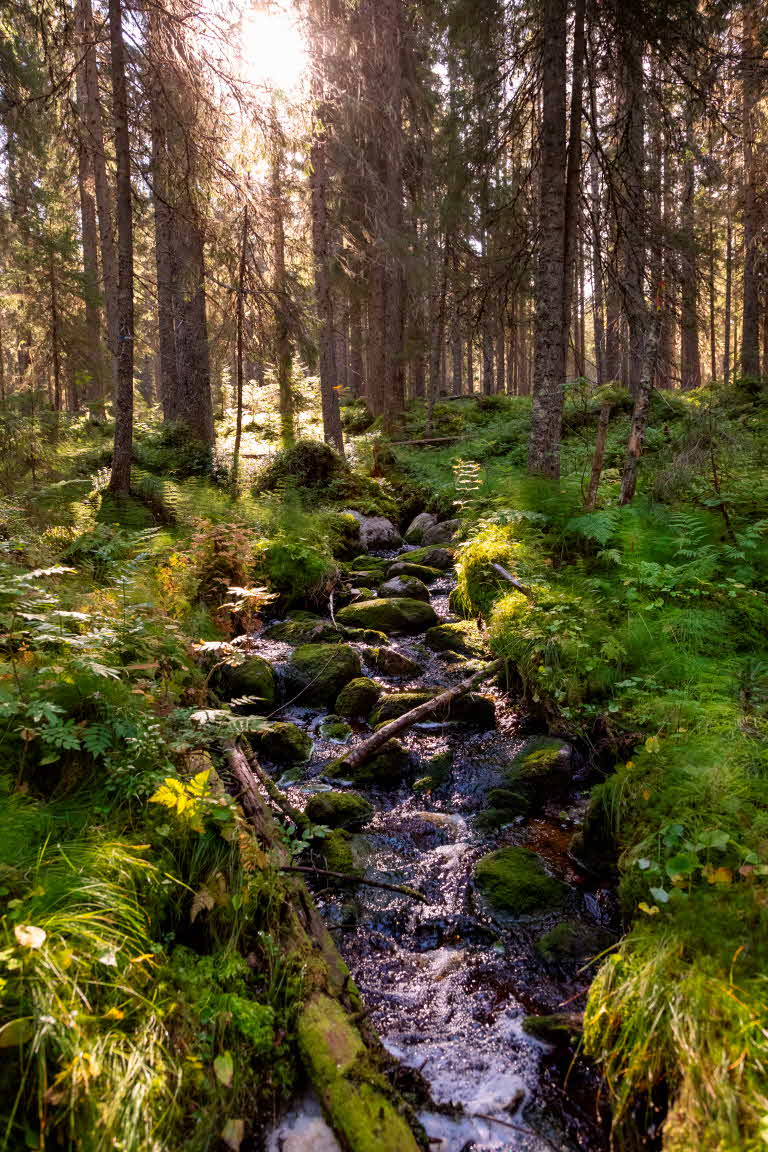
- FOREST
- SCA's FORESTS
- RESPONSIBLE FORESTRY
- PROTECTING WETLANDS AND WATERCOURSES
- BUFFER ZONES – A HAVEN
Buffer zones – a haven
Buffer zones, the area that lie between a forest and water, serve many important functions in the landscape. They are retained when we harvest and provide a haven for both flora and fauna, offering shade and coolness for those species that appreciate it.
We never harvest all the way to the edge of a watercourse – we leave a buffer zone with trees. The trees, other vegetation and the undisturbed soil in the buffer zone reduce the leakage of nutrients and pollutants, and prevent sludge from reaching the water. It also protects the trees’ root systems from erosion.
Moisture and shade

The trees and bushes in the buffer zone also offer shade, which helps to moderate the water temperature during the summer. Some aquatic species are sensitive to higher water temperatures. And too much sunlight will cause algae blooms and deplete oxygen levels.
The buffer zone also helps to preserve the moist climate, which is essential for many plants and animals. The vegetation retained in the buffer zone also provides food for aquatic organisms when leaves and insects fall down into the water. In addition, trees and branches that land in the water provide vital habitats for those species that depend on deadwood for their survival.
Since all streams and lakes and their surroundings are different, the buffer zones must be adapted to the conditions of the site. Sometimes, wide and completely untouched buffer zones should be retained, while selected trees should be removed at other times to promote deciduous trees, for example. If there is no buffer zone, we can plant trees, or allow the trees that regenerate to grow, so that we can eventually achieve vegetation along the water.